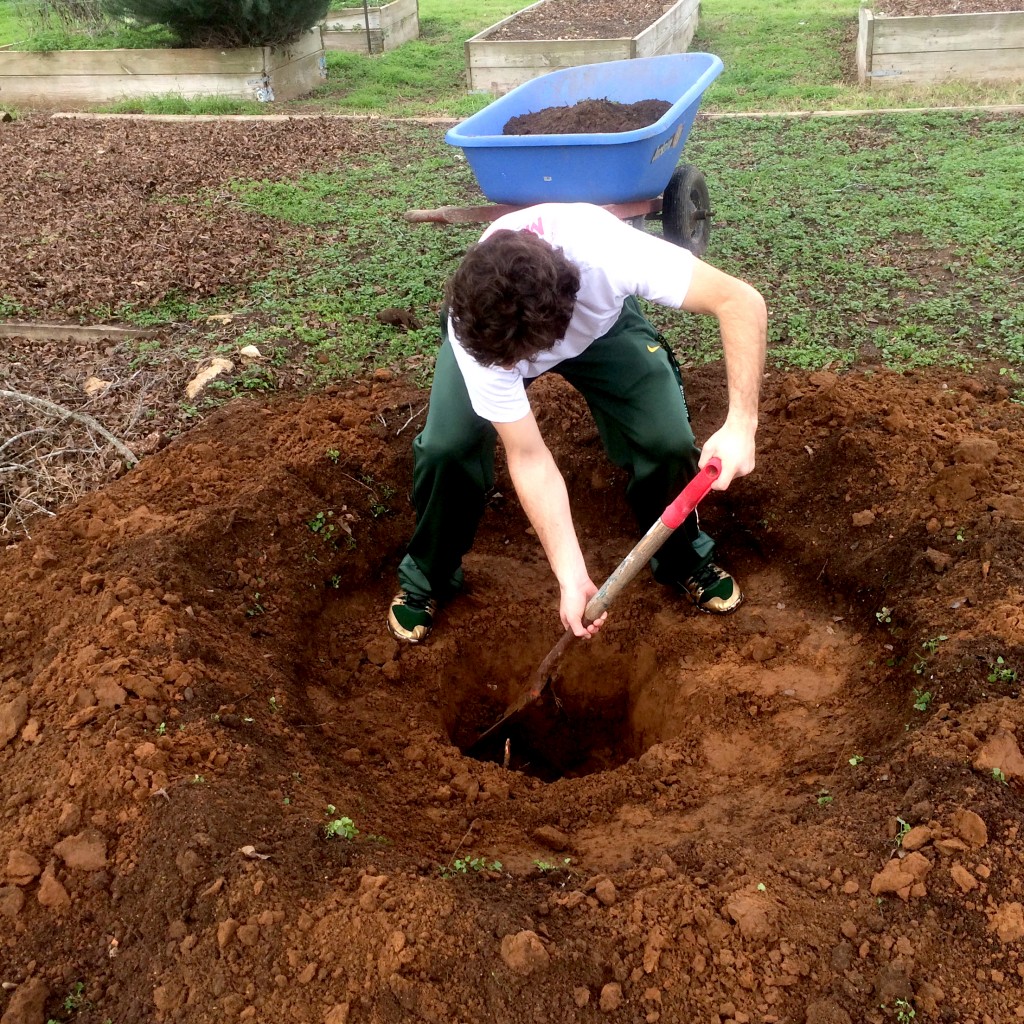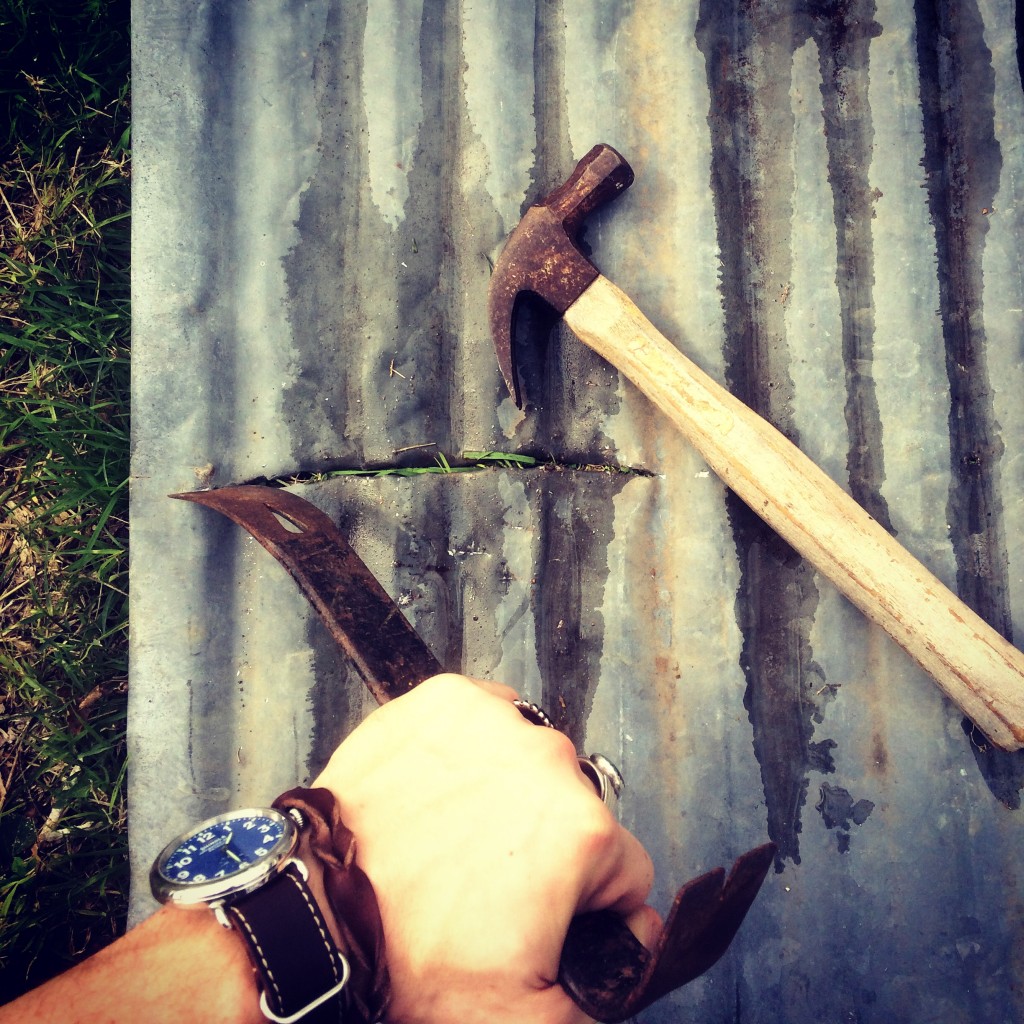In Texas, tamales are a holiday tradition. Our gringo family has always been lucky enough to be gifted a couple of dozen for Christmas or we hit up Ventura’s in Victoria, Texas for some homemade, south of the border goodness. Since my dive into the culinary world this past year, Mom thought we should try our own hand at tamale making, so she scoured social media in search of the best tamale teacher in town. Word on the street was Mrs. Lisa was the “reina tamal,” or the tamale queen for you gringos.
My last post talked about the hog’s head and pork butts I brought back from New York. Now I could get to work on those beauties.
With the meat thawed, I carefully skinned the hog’s head and the Boston Butt then threw them into a monster-sized pot to boil.


My younger cousins scrutinized the pig’s head submerged below the water’s surface and unanimously swore they would “never eat tamales again!” The trimmings from the skin, along with the ears and snout were tossed into a dehydrator to be made into dog chews. This is the concept known as the “nose-to-tail” butchery. As a rule, you use every part of the hog except “except the squeal.” These dried remnants were going to make some pooch really happy come Christmas morning and I didn’t want to waste a thing.
Now if you’re wondering if ‘la reina tamal’ was in anyway a bit apprehensive about some gringo family contacting her out of the blue on Facebook, in search of her prized tamale recipe, you would be spot on. Once Mrs. Lisa arrived with her husband Steve, she confessed she had prayed over the matter before getting the green light from the Big Guy. So there we were.
Standing in our kitchen like old family friends.
One ready to teach and one ready to learn.
Mrs. Lisa quickly took over the pot of cooking pork.
Seasoning and testing.
Seasoning and testing.
Let me stop here and explain this is the part where Steve comes in. Steve is ‘la reina tamal’s ’ official taster. Mrs. Lisa has a long tradition of never eating tamales except on Christmas Eve. Not even to taste it for spiciness during preparation. All these years, she has passed forkfuls of pork to her husband until he gives the official “go-ahead” nod of approval. So finally, with a bow of the head and a grin on his face, Mr. Steve proclaimed the meat, “perfect.”

Leaving me to debone and hand-grind the pork, Mrs. Lisa warned me the real work didn’t start until the next day. Early tomorrow morning we would all gather and start the tedious, assembly-line process of filling and wrapping. She advised me more than a few times before she and her husband left for the night, to get a good night’s sleep.
Early the next morning, the family assembled in the kitchen, ready for the real lesson to begin. Mrs. Lisa arrived with yet another secret ingredient: fresh made masa from a local tortilla factory.

Mrs. Lisa, who doesn’t sit at anytime while she makes her tamales, carefully seasoned the masa and mixed it with her hands. Just as before, she abided by her rule religiously. She never tasted the meat or masa at any point, but would pinch off small balls of masa for me to judge. Mr. Steve presided over the whole process, making sure the gringo didn’t steer Mrs. Lisa too far from the original recipe.

Once the masa was seasoned and chili red in color, we turned the kitchen into a small tamale factory. One end of the breakfast table was devoted to spreading the masa on the pre-soaked cornhusks, or “ojas” as Mrs. Lisa called them. The other end of the table filled the ojas with meat, then rolled and wrapped the top of the filled husks over.

The meat end of the table was going smoothly, but I could see Mom and the aunts having difficulty with the masa spreading. Mrs. Lisa’s years of practice, churned-out some textbook ojas.
All precisely spread with masa.
All perfectly ¾ of the way up the husk.
Mom and the Aunts, not so much.

Two and a half ours later, 21 dozen tamales lay bundled on the table, ready for steaming. Using the leftover seasoned water from the boiled pork, I lined 2 large pots with the remaining cornhusks. After a little steaming, the family crowded around to sample.

Remember those family members who were grossed out by the meat? Yeah, they got over that pretty quick. These were some of the best tamales I’ve ever eaten. The family thought so too.

A BIG THANKS to Mrs. Lisa and Mr. Steve. I really appreciate y’all taking the time out of the holiday season to share your treasured family recipe. My family and I had an absolutely wonderful time.

























